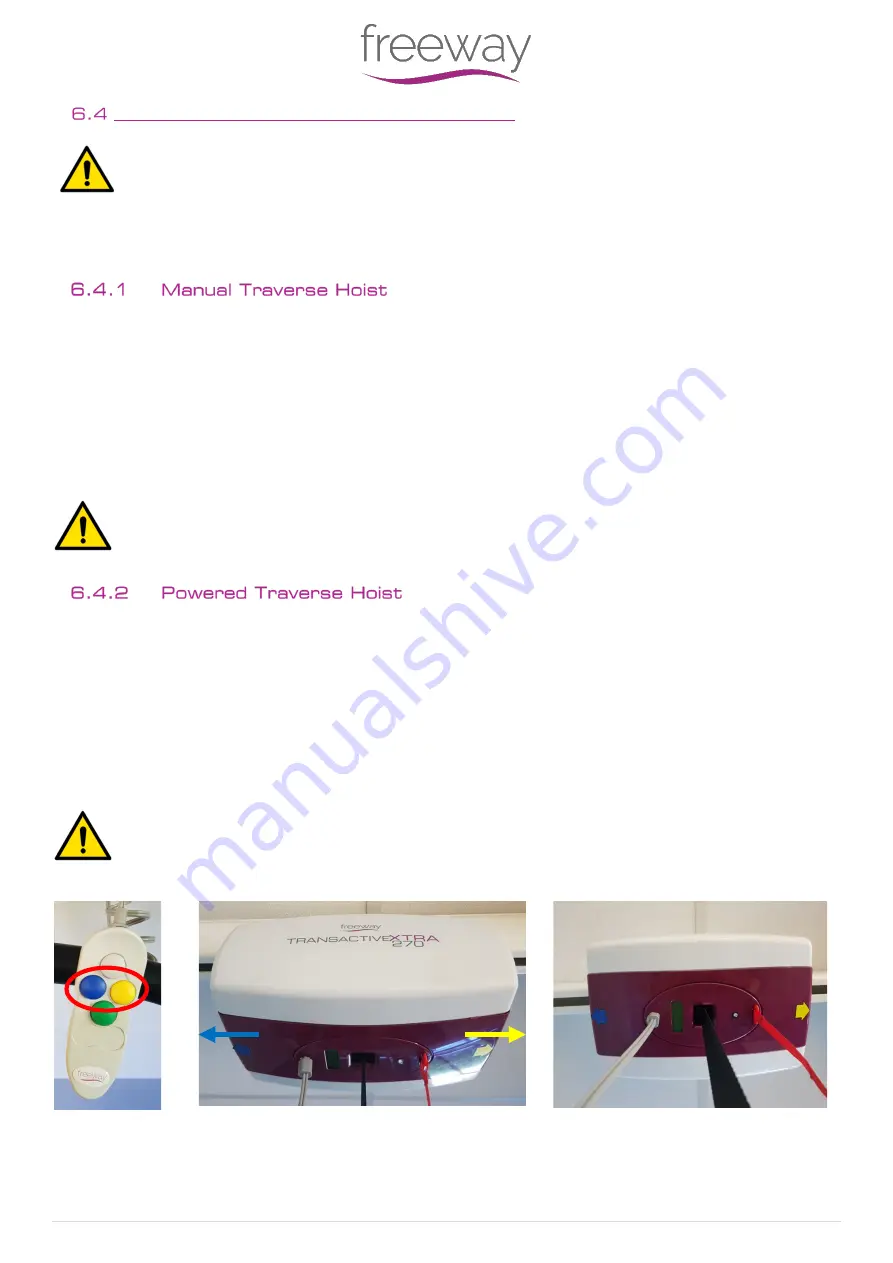
999075 – Revision B
P a g e
|
27 of 48
Moving the Hoist along the track system
Always use extreme care when moving the Hoist along the track. Watch out for and avoid any obstructions that may
cause injury to the individual in the sling, damage to the Hoist and/or to the obstruction.
After use, the Hoist should be located at the correct end of the track system for re-charging.
See the relevant section below for either a Manual Traverse Hoist or a Powered Traverse Hoist.
When needed, the Hoist should be moved along the track using the following appropriate method:
To Traverse the Hoist manually, you must first lower the carry bar to an appropriate height to hold onto with both hands.
Then the user must hold the carry bar with both hands either side of the lift tape, and push or pull the Hoist along the track in
the intended direction of travel to the required destination.
This process applies when moving the Hoist with and without a patient in the sling.
When there is a patient being transferred, ensure they are at a reasonable height above the ground to ensure they are not being
dragged along the floor, or hit any obstructions.
Always ensure the direction of travel is clear of any obstacles.
NEVER pull the Hoist along the track using the handset or the Emergency Cord as this could have a detrimental effect
on the performance of the Hoist.
When needed, the Hoist should be moved along the track using the following appropriate method:
To Power Traverse the Hoist, the blue and yellow buttons on the handset allow you to traverse the hoist forwards and
backwards along the track. (Figure 21)
The Buttons on the handset correspond to the blue and yellow directional arrows on the underside of the Hoist. (Figure 22 and
23)
The direction is determined by the colour of the button that is pressed. This works the same no matter what side of the hoist a
person is standing on.
Only in an emergency situation should a powered traversing hoist be moved manual.
NEVER pull the Hoist along the track using the handset or the Emergency Cord as this could have a detrimental effect
on the performance of the Hoist.
Figure 21
Figure 22
Figure 23
















































